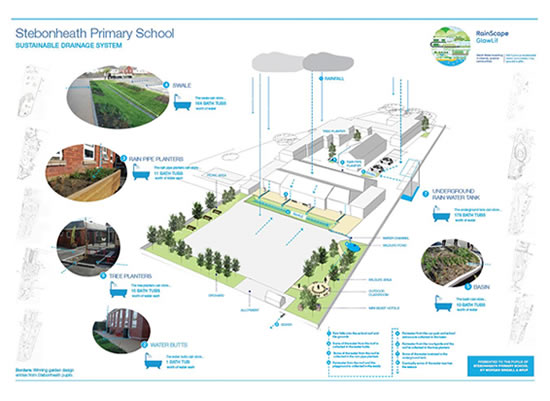Where
Location
Marblehall Road, Llanelli SA15 1NB
Description
Stebonheath Primary School is situated at the top of a hill, surrounded by a number of residential streets where flooding has been experienced. The school has very little green space, but has a car park to the front and a large playground to the rear.
Modelling was undertaken by Dŵr Cymru Welsh Water (DCWW) during the investigative stages of their wider surface water management scheme that is taking place across the Llanelli area. This modelling estimated that Stebonheath Primary School was contributing high flow rates to the nearby combined sewer at a rate of around 61l/s in a 1 in 5 year storm event.
By retrofitting a range of solutions into the school grounds, it is estimated that the peak flow rates will be reduced to around 3l/s.
Main SuDS used
The below components were chosen to provide some interception, reducing flows via evapotranspiration where possible and attenuate remaining flows during storm events.
-
30m swale with below ground geocellular storage
-
Downpipes on the elevation nearest the playground diverted into four water butts, designed to overflow to rills draining into the swale
-
Permeable paving between the school and the swale
-
Remaining downpipes diverted into six rain garden planters
-
Geocellular storage beneath the car park
-
A bioretention basin in the car park
-
Two tree pit planters to the front of the building, planted with white barked Himalayan Birch trees
-
Small pond with overflow via rill to the swale
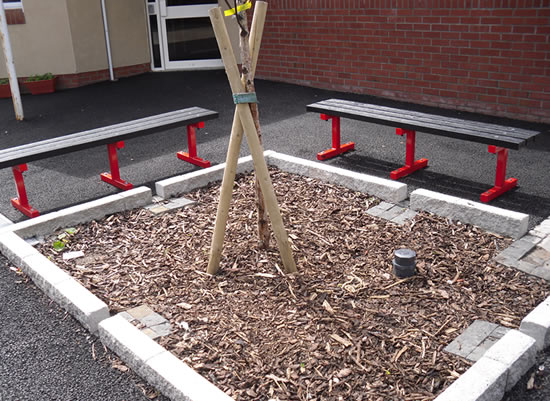
Figure 1: Tree pit planter
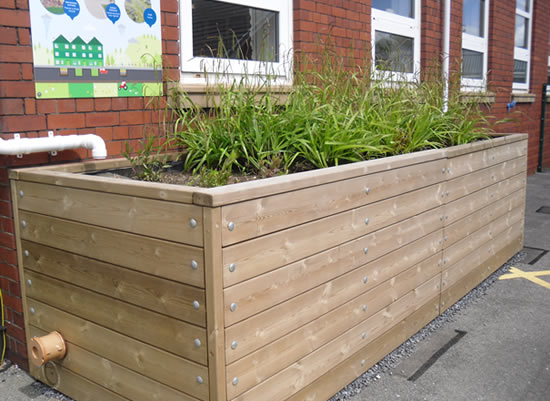
Figure 2: Downpipe disconnection into rain garden planter
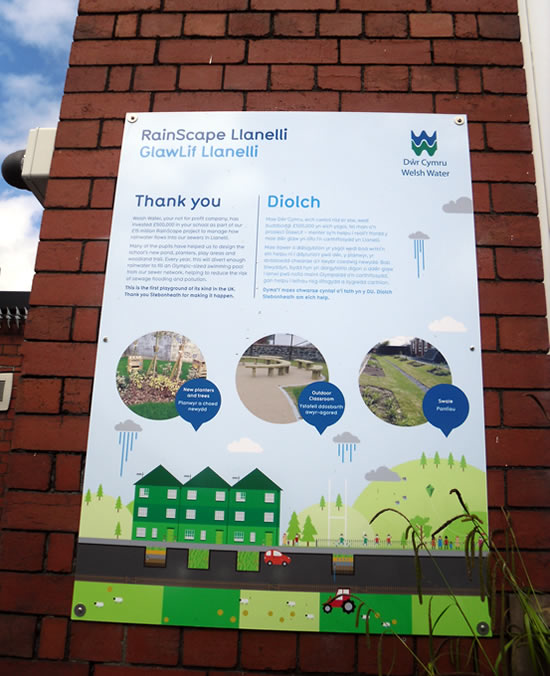
Figure 3: Outdoor signage at the school
How it works
The scheme concentrates on source control measures such as the water butts and rain garden planters, but contribute to a wider regional approach, with a further 11 schemes due to be completed in the Llanelli and Gowerton areas by April 2015.
The majority of components on the side of the school nearest the playground divert flows into the water butts for use in the school allotment and discharge into the swale (figure 4 and 5). The flow is controlled when leaving the geocellular storage using a vortex flow control. However, for the rest of the scheme, attenuation is largely managed on the surface.
The swale gives some much needed green space in the school, but to ensure that the swale drains effectively and doesn’t contain standing water for long periods, gravel was used instead of a grassed top or engineered soil. There were no concerns about using this in a school playground.
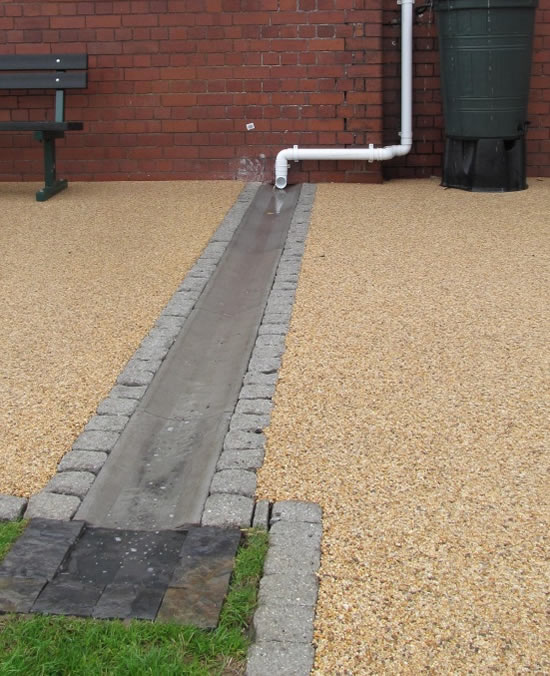
Figure 4: Downspout disconnection
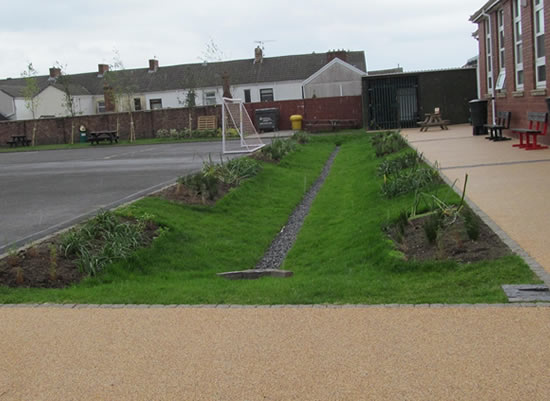
Figure 5: Swale
Due to lack of green space, it was not possible to keep all flows above ground, particularly on the elevation of the school nearest the car park. Wherever possible, the flows have been diverted into planters and the bioretention basin, but there was need for geocellular storage to be used. It was not possible to infiltrate flows due to the former land use in the area (mine workings). The scheme was designed in accordance with the SuDS Manual and constructed during the summer holidays in 2013. The overall scheme can be seen in figure 6 (designed to be understood by the school children)
Figure 6: (Child friendly) plan of the SuDS scheme (click to enlarge)
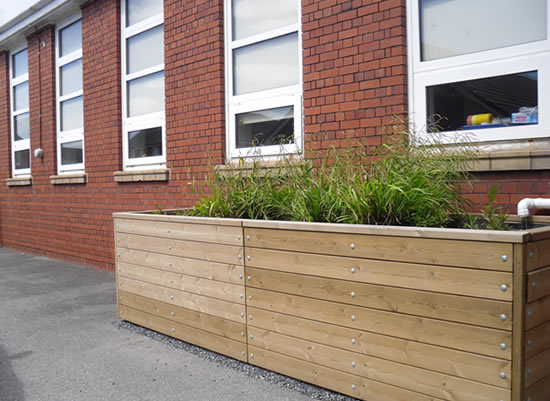
Figure 7: Rain planter on the car park elevation of the school
The purpose of the scheme is to manage roof runoff and runoff from the hard standing at the school. This has benefits both on and off site by dealing with the ponding of surface water that previously occurred in the playground, and by reducing the peak flow rates entering the combined sewer system. This was a key consideration and contributes to the wider objectives of reducing the instance of sewer flooding, and improving the water quality in the Loughor Estuary. Both of these objectives are being achieved by the use of surface water management solutions.
Specific details
Stebonheath Primary School provided DCWW with a fantastic opportunity to both reduce and attenuate a large volume of surface water runoff from the site, but also to educate the community on the impact too much surface water can have on their local environment when not managed properly, as well as water efficiency messages.
The headmaster at the school, Mr Littler, was supportive and has been a fantastic advocate of the scheme, convincing the school governors, the local education authority and the local community of the merits of this work. He has also worked some of the data from the post construction monitoring into lessons for the children.
During the design process, the designers went into the school with one of DCWW’s peripatetic teachers and asked the children what they would like to see as part of the scheme. As a result, the finished scheme includes a woodland area, an outdoor classroom, a pond and even a bug hotel. The existing perimeter fencing was also replaced to avoid vandalism to the newly planted trees and other features.
The total scheme cost was £500k, but is part of a £15m programme of work that will be delivered in Llanelli and Gowerton up to 2015.
The geocellular storage beneath the car park is integral to ensuring the full level of attenuation necessary for the site. We expect post construction monitoring results to confirm the value of this element of the scheme. There are no good figures available to account for interception losses, but a 50% flow removal rate was assumed, and monitoring is showing a removal rate of nearer 70%.
Benefits or achievements
As a result of this scheme, the school playground no longer suffers from ponding of rainwater and the peak flow rate of surface water runoff entering the public sewer network has been drastically reduced. DCWW are collecting monitoring data downstream of the site to assess the effectiveness of the scheme. This data is then being compared to the hydraulic model and to date its performance has exceeded expectations. There are no good figures available to account for interception losses, but a 50% flow removal rate was assumed, and monitoring is showing a removal rate of nearer 70%.
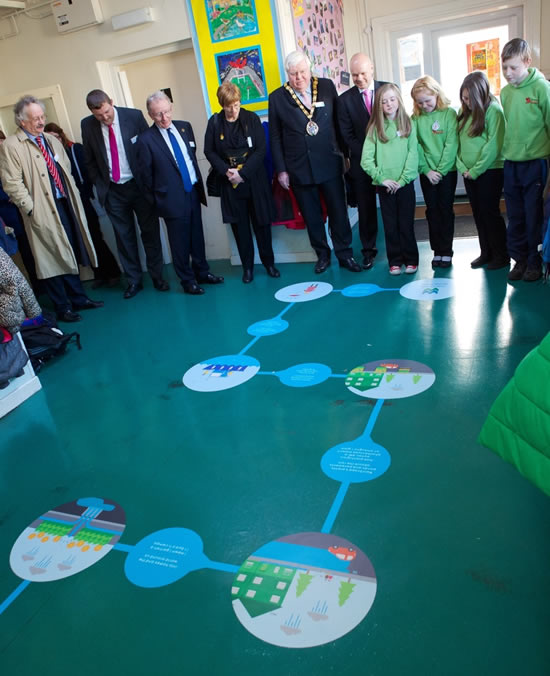
Figure 8: Interpretation board in the school
In addition, the school has attracted attention from local dignitaries (figure 8) and media attention at both a local and national level and the scheme has won the following awards:
-
Institute of Water Innovation Award 2013 – Winner in Environmental Category
-
Morgan Sindall All Stars Awards March 2014 - Best Environmental Project
-
Water Industry Achievement Awards 2014 - Sustainable drainage and Flood Management Initiative of the Year award
Challenges or lessons learnt
As all of the works were within the boundary of the school on the private drainage system, they were undertaken with under a private agreement with the local authority. This is a new way of working for DCWW as water and sewerage companies usually rely on using statutory powers to undertake works. Following the completion of the defects period, the system will be handed back to the local authority for long term operation and maintenance.
The scheme was progressed in a very tight timescale which meant that negotiations with a range of stakeholders had to take place within a matter of weeks during term time. The construction period was also constrained because the majority of works had to take place during the 6 weeks summer holidays.
Lessons have also been learnt and carried forward to other schemes in relation to the way customers are engaged on work that is undertaken and how best to keep them informed and up to date. For example, in this instance the pupils at this school were able to get involved in the design of the scheme and DCWW were able to take the opportunity to disseminate other business messages such as water efficiency and encouraging positive behaviours to mitigate sewer abuse. The opportunity will be taken in future to engage with schools and community groups where possible to provide these wider messages, but also to ensure acceptance of any work undertaken.
Where possible, the opportunity to co-design schemes with residents or users of the space should be maximised. This will increase the acceptability of a scheme and ensures that there is a sense of ownership, mitigating the future potential for neglect or vandalism.
The designers will undertake a full post project review once the site is fully established.
Interaction with the local authority
In order to ensure effective communication with the local authority throughout the programme of work across Llanelli, a facilitation group has been established with representatives of Dŵr Cymru Welsh Water (and their delivery partners) and Carmarthenshire County Council. This group ensures that there is a formal platform to raise issues and discuss the work being undertaken and is key to the successful delivery of schemes in Llanelli.
The group is made up of representatives from multiple departments across the two organisations and includes legal, planning, asset strategy, biodiversity, land drainage, communications, capital delivery, design, street works, highways and land agents. By engaging with this multi disciplinary group on a regular basis, the right people are engaged at the right time to facilitate the efficient delivery of schemes and ensure that all relevant parties’ objectives are considered.
Team and details
The scheme was designed and constructed by Dŵr Cymru Welsh Water and their delivery partners, Morgan Sindall, Arup and EC Harris.
The work has been facilitated by a Memorandum of Understanding between DCWW, Natural Resources Wales and Carmarthenshire County Council and is supported by the Welsh Government and Ofwat.
More information can be found at http://www.dwrcymru.com/en/My-Wastewater/RainScape.aspx or by emailing RainScape@dwrcymru.com
Status: Completed in 2013, with the majority of the construction taking place over the summer holidays.




